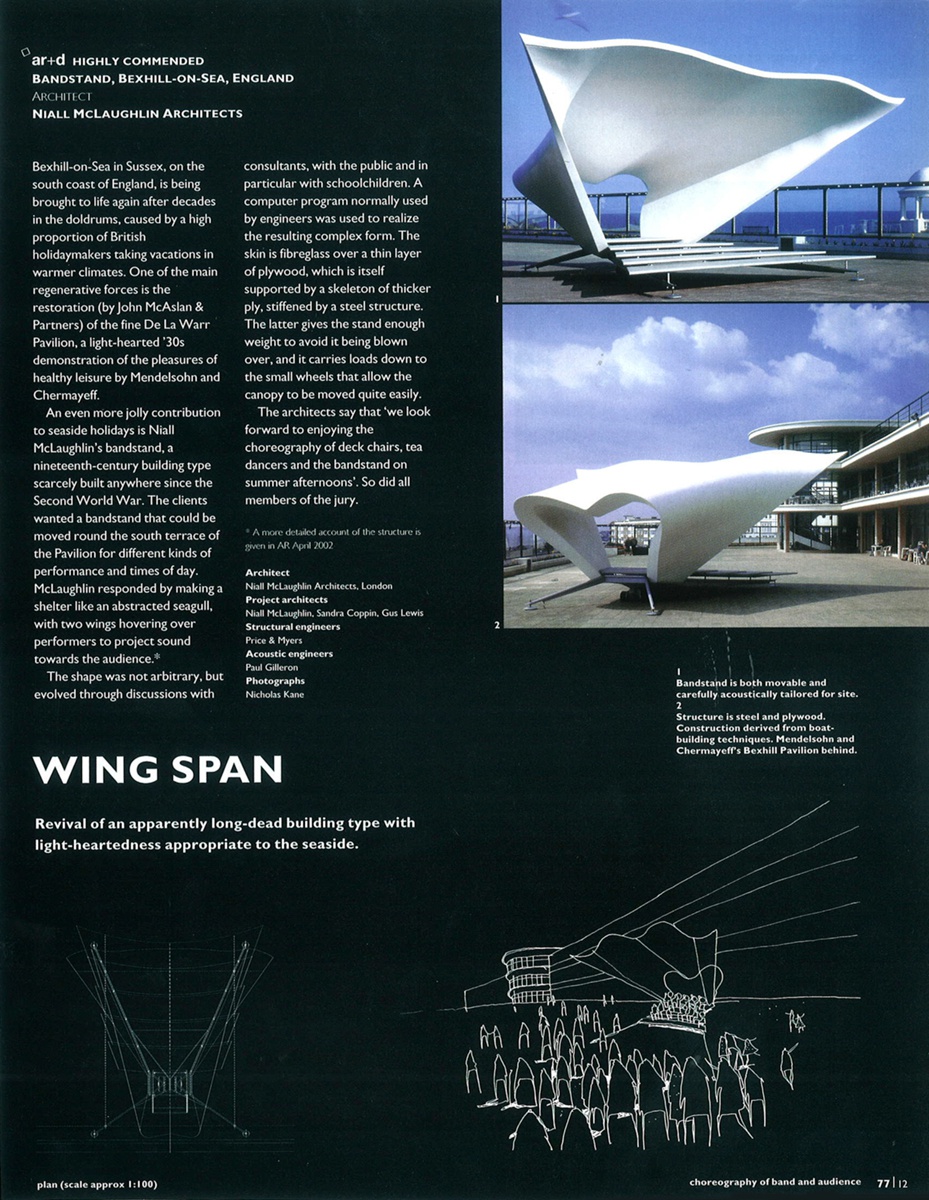Wingspan, AR+d Highly Commended - Architectural Review
Issue 1270, December 2002
Text Architectural Review
Images Nick Kane
Bexhill-on-Sea in Sussex, on the south coast of England, is being brought to life again after decade in the doldrums, caused by a high proportion of British holidaymakers taking vacations in warmer climates. One of the main regenerative forces is the restoration (by John McAslan & Partners) of the fine De La Warr Pavilion, a light-hearted ‘30s demonstration of the pleasures of healthy leisure by Mendelsohn and Chermayeff.
An even more jolly contribution to seaside holidays is Níall McLaughlin’s bandstand, a nineteenth-century building type scarcely built anywhere since the Second World War. The clients wanted a bandstand that could be moved around the south terrace of the Pavilion for different kinds of performance and times of the day. McLaughlin responded by making a shelter like an abstracted seagull, with two wings hovering over performers to project sound towards the audience.
The shape was not arbitrary, but evolved through discussions with consultants, with the public and in particular with schoolchildren. A computer program normally used by engineers was used to realize the resulting complex form. The skin is fibreglass over a thin layer of plywood, which is itself supported by a skeleton of thicker ply, stiffened by steel structure. The latter gives the stand enough weight to avoid it being blown over, and it carries loads down to the small wheels that allow the canopy to be moved quite easily.
The architects say that ‘We look forward to enjoying the choreography of deck chairs, tea dancers and the bandstand on summer afternoons.’ So did all members of the jury.
